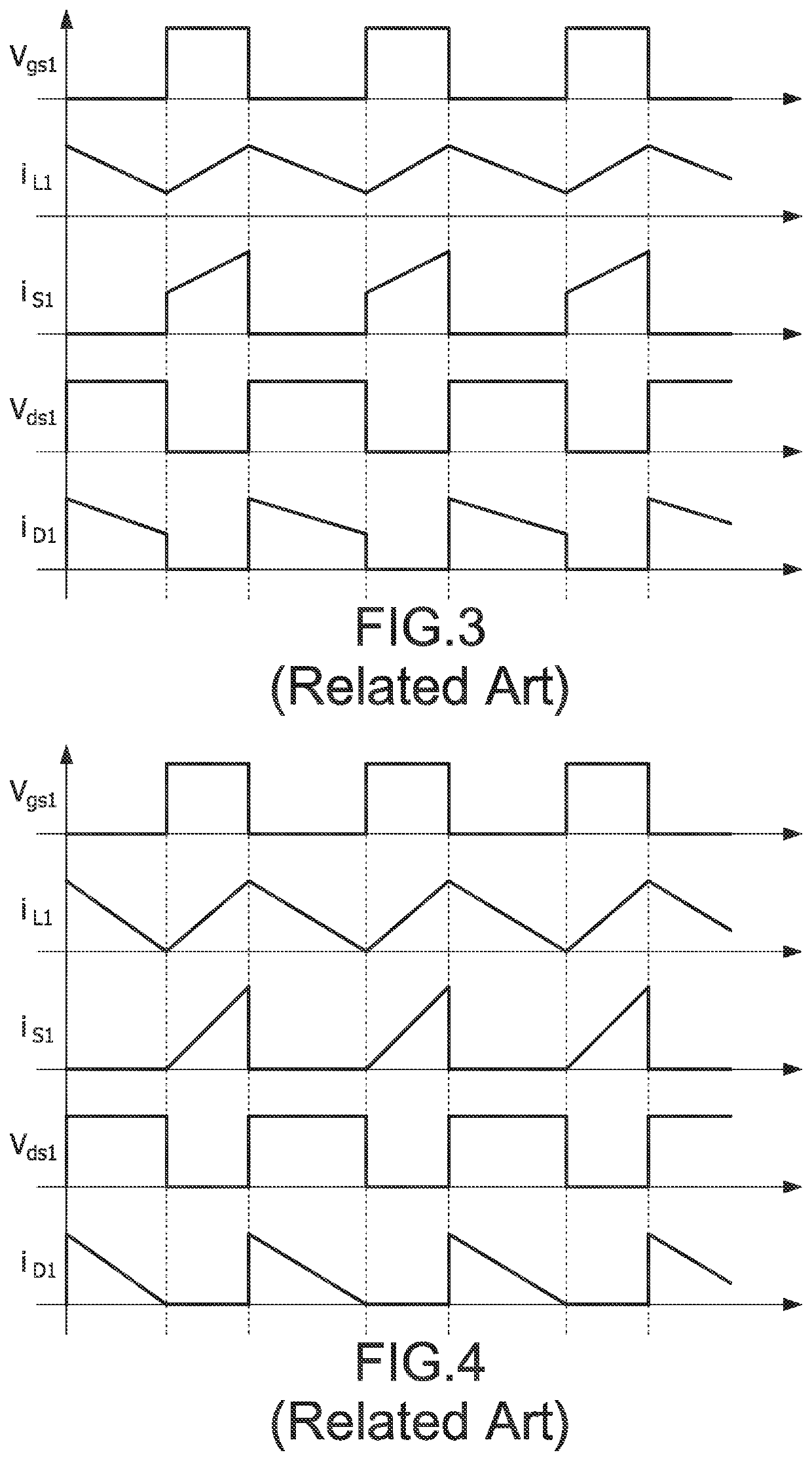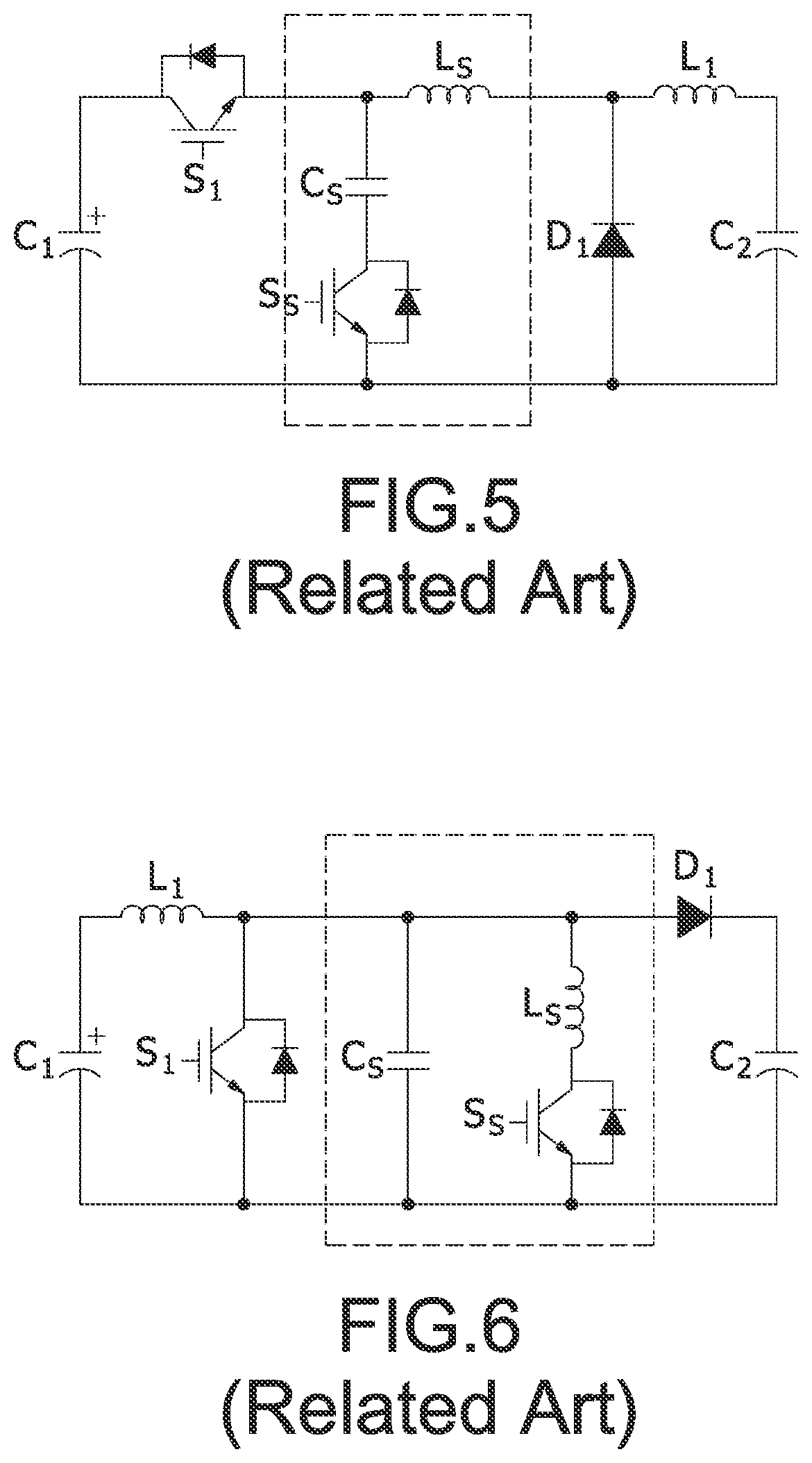Soft-switching power converter
- Summary
- Abstract
- Description
- Claims
- Application Information
AI Technical Summary
Benefits of technology
Problems solved by technology
Method used
Image
Examples
first embodiment
[0052]Please refer to FIG. 7A and FIG. 7B, which show a circuit diagram of an inductive coupled unit according to the present disclosure and a schematic diagram of the circuit component shown in FIG. 7A, respectively. In this embodiment, the inductive coupled unit 10 includes a coupled inductance composed of a main inductance 11 (or indicated by a magnetizing inductance Lm) and an auxiliary inductance 12 (or indicated by a leakage inductance Ls) and an auxiliary switch unit 13. The principle of the coupled inductance can be regarded as the principle of the coupled transformer, that is, it is to wind the auxiliary coil (i.e., the auxiliary inductance 12) on the main inductance 11, which is implemented by the iron core and the main coil wound on it) to achieve the coupling effect. A coil turns ratio between the main inductance 11 and the auxiliary inductance 12 is 1:N. The auxiliary switch unit 13 includes at least one auxiliary switch which is a controllable switch to provide at leas...
third embodiment
[0057]Please refer to FIG. 9A and FIG. 9B, which shows a circuit diagram of the inductive coupled unit according to the present disclosure and a schematic diagram of the circuit component shown in FIG. 9A. In this embodiment, the soft-switching circuit includes a main inductance 11 and an auxiliary switch unit 13. Specifically, a main coil of the main inductance 11 is in a tapped coupling manner, that is, the main inductance 11 provides a first couple end A and a second couple end B, and one part of the main inductance 11 provides a first inductance correspondingly coupling to couple ends A, C and the other part of the main inductance 11 provides a second inductance correspondingly coupling to the couple ends B, C. In other words, the main inductance 11 is composed of the first inductance and the second inductance. Therefore, the auxiliary switch unit 13 is coupled between the couple ends B, C of the main inductance 11 to form the closed loop. Similarly, the auxiliary switch unit 13...
PUM
 Login to View More
Login to View More Abstract
Description
Claims
Application Information
 Login to View More
Login to View More - R&D
- Intellectual Property
- Life Sciences
- Materials
- Tech Scout
- Unparalleled Data Quality
- Higher Quality Content
- 60% Fewer Hallucinations
Browse by: Latest US Patents, China's latest patents, Technical Efficacy Thesaurus, Application Domain, Technology Topic, Popular Technical Reports.
© 2025 PatSnap. All rights reserved.Legal|Privacy policy|Modern Slavery Act Transparency Statement|Sitemap|About US| Contact US: help@patsnap.com



